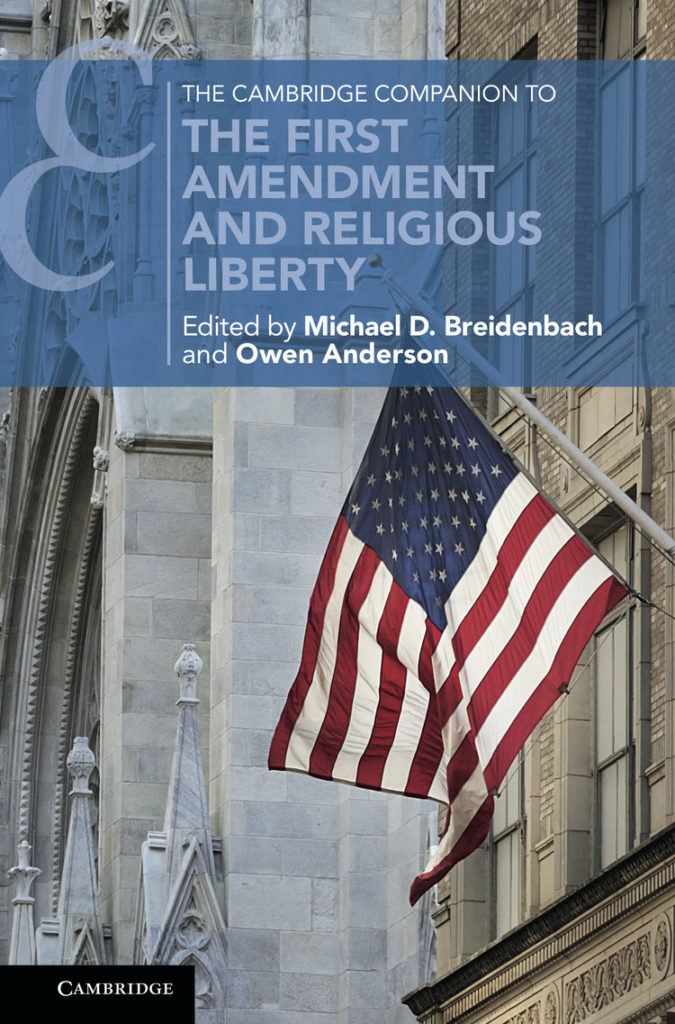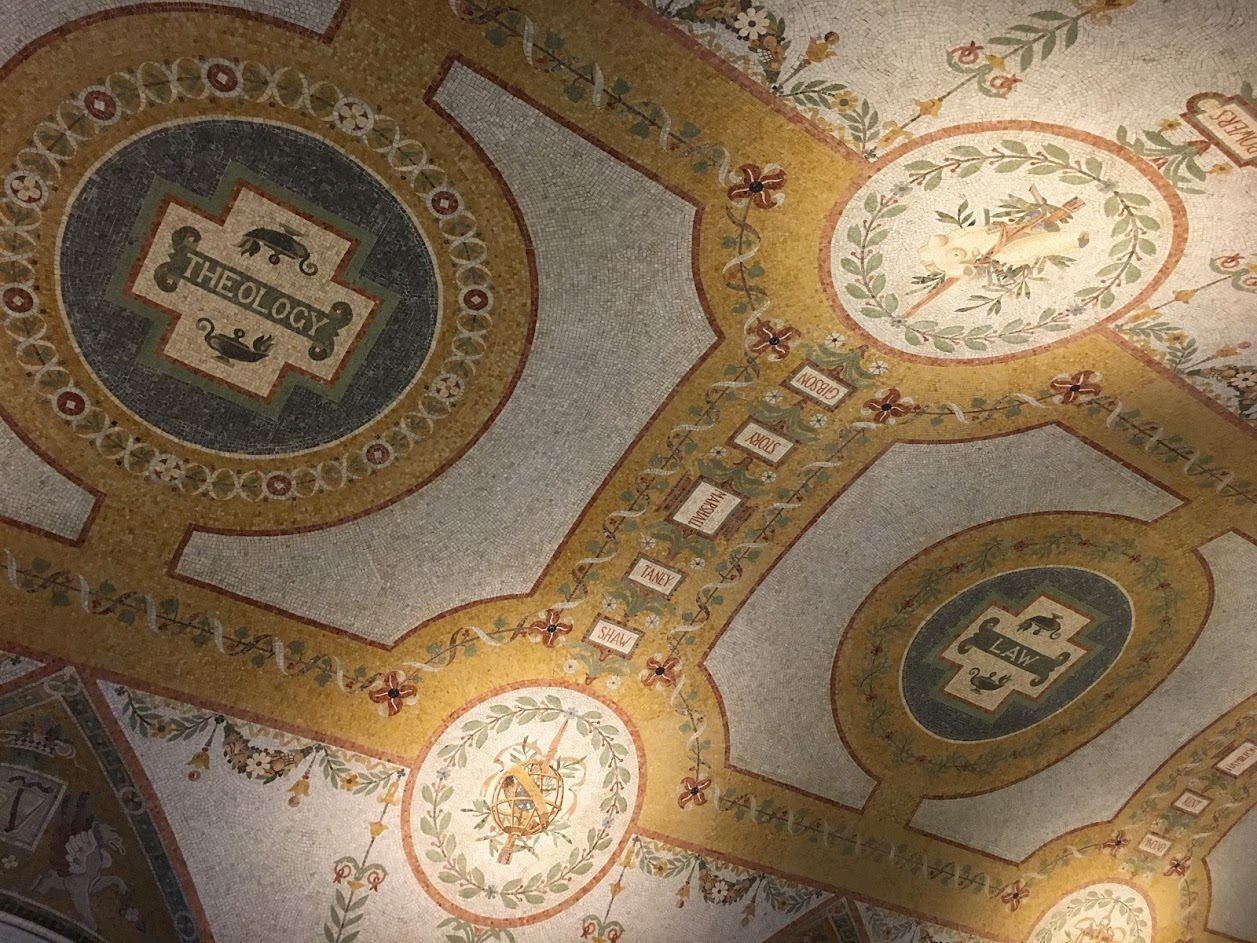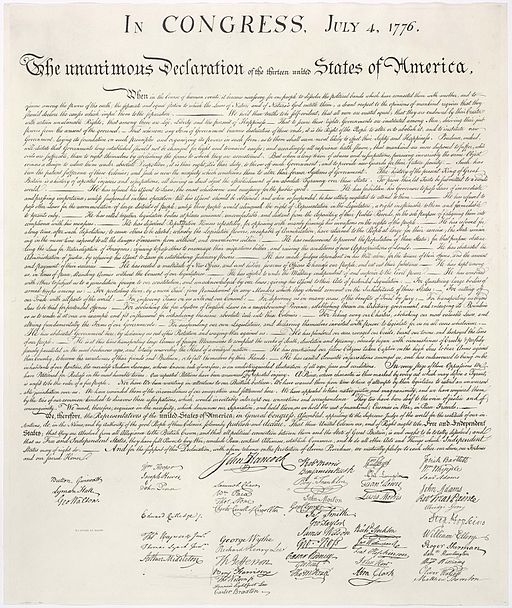
The Cambridge Companion to the First Amendment and Religious Liberty edited by
Michael D. Breidenbach and Owen Anderson
Review by Lael Weinberger
Religious liberty has been the subject of lots of debates over the course of American history. The founding period saw debates about state establishments. The nineteenth century was marked by the public-school “Bible Wars”— conflicts over Protestant Bible reading in public schools being imposed on Catholics. The twentieth century saw Bible reading removed from public schools over considerable public outcry. The twenty-first century has already been marked by heated debates over religious exemptions, prompting a new set of political and scholarly arguments that question the fundamental premises of religious liberty. The COVID-19 pandemic has provided a new context for the old debates. Are houses of religious worship essential? Are they being subjected to discrimination when other providers of services (including casinos) are allowed to open but houses of worship must stay closed? Can a regulator decide to discount a church’s desire to meet in person when that church has the ability to broadcast services via an online livestream? Is religious practice valuable to our society? Should religious exercise be protected under our laws? If so, how? On and on the questions go.

These questions have been essential parts of the American constitutional tradition thanks to the First Amendment: “Congress shall make no law respecting an establishment of religion, or prohibiting the free exercise thereof.” Whole libraries have been written about those sixteen words: legal interpretation, philosophy of religion, political theory, and more.
Whether one is already immersed in this literature or is trying to figure out where to begin, The Cambridge Companion to the First Amendment and Religious Liberty should be on the reading list. Michael Breidenbach and Owen Anderson have brought together an impressive group of scholars to survey the history, theory, and law of religious liberty in America. It’s not an encyclopedia but a collection of smart and opinionated essays that, together, introduce readers to many of the key issues. The overarching theme that emerges from these essays is that religious liberty is valuable and good, deeply rooted in American history (even if its details are endlessly contested), and worth defending from contemporary challenges.
Philosophy
The book opens with essays interrogating the presuppositions of religious liberty. The authors of these chapters argue, controversially, that religion is valuable on its own terms, as a set of beliefs and activities ordered to the pursuit of truth and transcendence. Janice Tzuling Chik argues that religious exercise must be understood in terms of human action, rejecting a common assumption in contemporary literature that religion is fundamentally about mere belief. John Finnis examines and rejects a similar common assertion, that religion is just one possible deeply-held belief among many. To the contrary, Finnis argues that religion has unique characteristics in that it is oriented to the pursuit of truth.
Owen Anderson tackles this theme from a slightly different angle, considering what it means for religious freedom to be a natural right. He reads the constitutional right as informed by the theory of the Declaration of Independence. The Declaration, in turn, affirmed that government is to safeguard rights endowed by the Creator. Anderson distinguishes three elements to this claim: epistemology (how we know what we know — in this case, self-evidence), metaphysics (what is real — in this case, human nature and a creator God), and ethics (equality and rights are to be protected). Religious elements are built into this very way of thinking about rights. Most notably, it starts with a conviction that God exists and that certain things flow from this belief, which is accessible to natural reason. Anderson characterizes these religious assumptions as “natural” religion — that is, they are elements accessible to reason and not dependent on special revelation. He contrasts the natural-rights justification for religious liberty with the skepticism that is often thought to justify religious liberty today. On the skeptical theory, it is inappropriate for government to interfere with religious beliefs precisely because religion is subjective, unknowable, subject to personal opinion. Anderson argues that pluralism based on the impossibility of knowing ultimate truth is corrosive to the very possibility of civic order if taken to an extreme. By contrast, Anderson suggests, the American constitutional principle of religious freedom is based on the presupposition that God’s existence and truth is knowable.
History
These philosophical positions are provocative. But historically, natural rights were a familiar vocabulary to Americans in the founding period. A considerable number of the chapters in the Cambridge Companion examine America’s history of law and religion.
The history starts with religion in early America before the Constitution. Glenn Moots situates this against the backdrop of European history. For a century prior to the establishment of English colonies in America, Europe was in ferment over the relations between church and state. Many early Protestants pursued partnerships with civil magistrates, in part for simple self-preservation. Tapping into this trend (albeit for reasons that were anything but religiously-motivated), King Henry VIII of England severed ties with the Roman Catholic Church and declared the English monarch head of the Church. Meanwhile, other Protestant traditions argued for institutional separation between church and state in one form or another, lines of thought that would become important in shaping the American experience. In America, different regions and colonies had distinctive ways of structuring the church-state relationship, as Moots documents in a helpful colony-by-colony survey. Moots argues that more diverse interests in religion in the aftermath of the Great Awakening (c. 1730-1750) facilitated the rise of toleration and ultimately disestablishment.
Several chapters then turn to the constitutional period and the First Amendment’s religion clauses in particular. As Chris Beneke notes, interpretations in the literature range from those who claim the United States was established on “an exclusively Christian foundation” to those who describe the founders as avid secularists (141). Beneke’s point is one historians love to make: the generalizations at either extreme are inaccurate. Instead, “the more we know, the more complicated things become” (162). The founders agreed that the federal government should not have authority over “religious institutions and practices” (156). And the general trend was toward the extension of religious liberty to a greater diversity of religious groups. Beyond this there was no consensus, either in the late eighteenth century (as Beneke documents) or in the historical literature (as Paul Kerry explains in a valuable chapter surveying the more recent literature).
The broad outlines of this history will be familiar to any readers with more than a passing familiarity with the law-and-religion conversation in America. Yet the historical record is often distorted in service to some contemporary argument. The historical chapters perform a valuable service simply in providing accessible syntheses of much of the best recent scholarship.

Along the way, even seasoned scholars of law and religion debates will doubtless learn new things. Michael Breidenbach, for instance, offers a fresh vantage point on the founding period from the perspective of American Catholicism. Looking at the place of Catholics highlights the jurisdictional nature of the relationship between the federal government and ecclesiastical government. In 1783, the Vatican asked for congressional approval for an appointment of a new bishop in the United States. Congress disclaimed any authority over such “purely spiritual” matters (167). Breidenbach shows that Congress was rejecting a power of civil government — accepted under English and Continental law alike — to exercise patronage over ecclesiastical appointments. This happened at the same time as Catholic and Anglican bishops disclaimed power “over political affairs” (184). The First Amendment, among other things, constitutionalized this jurisdictional boundary. And Catholic founders like Maryland congressman Daniel Carroll were outspoken supporters of what would become the First Amendment. When it came to public office, approaching the Constitution with an eye on American Catholics also highlights the novelty of the American approach to religious tests and oaths. Catholics had been banned from holding public office in England by religious test oaths. This underscores the significance of, first, the Constitution’s prohibition on religious tests (Article VI) and, second, the wording of the federal oath of office passed by the First Congress as its very first piece of legislation. “[T]he US oath required a positive affirmation, rather than a denial of doctrines or beliefs as required in the English Oath of Allegiance” (173). The English oath, by contrast, required takers to specifically reject (as “damnable,” no less) the principle that a pope could depose a monarch or could absolve oath-takers of the obligations of the oath itself. Catholics of course were a small percentage of the American population at the founding. But Breidenbach’s chapter shows how careful attention to detail in one area can help us to then see the familiar (the text of the Constitution in this case) in a fresh light.
Most of the historical coverage is focused on the founding period but a few chapters take the historical analysis further. Jonathan Den Hartog sketches the religious liberty themes in nineteenth century American history. Zoë Robinson turns to the Supreme Court itself, which first interpreted the First Amendment’s Religion Clauses in the late nineteenth century and did not begin to develop its religion clause jurisprudence in earnest until the mid-twentieth century.
Legal Theory
Legal theory is also deeply influenced and informed by history, so more historical argument continues in the third part of the book. Donald Drakeman offers an argument for how to interpret the original meaning of the Constitution: his central claim is that the First Amendment’s point was preventing the creation of a national church by the federal government. Vincent Phillip Muñoz distinguishes the natural rights idea of religious liberty common in the founding period from a more modern focus on protecting religious liberties by creating exemptions from otherwise-applicable general laws. As a matter of political theory, the historical approach offered a powerful but narrow protection of the domain of religious liberty: in some core set of religious exercises, the government could not exercise jurisdiction at all. (Defining this core with precision would be a significant task and is not one Muñoz undertakes in this chapter.) The modern approach is different. Rather than have a narrow but absolute zone of religious liberty, it offers a broad but qualified religious liberty in the form of exemptions. The exemptions regime relies on judicial balancing tests (in which courts balance the importance of the right against the importance of the government interest to be advanced) rather than bright-line jurisdictional distinctions.
This brings the reader back to issues raised at the outset of the book: is the freedom of religion best thought of as a form of protection for personal autonomy? Or is it — ought it to be — conceptualized as a distinctive natural right concerned with the pursuit of truth and transcendence that is valuable in itself? There is good historical reason to connect the American principle of religious liberty to a vision of natural rights based on a theistic worldview. But does it make sense to draw on this natural rights tradition to understand — and shape — contemporary law?
This is a divisive issue precisely because every argument on this point will unavoidably implicate deeply-held assumptions about how we as humans are to pursue truth. Natural law accounts of the nature and accessibility of truth don’t fit easily with the dominant paradigm of liberal political theory (associated with John Rawls). Rawls insisted that public arguments about law and politics be accessible to public reason — justified, that is, by public values and standards accepted in the community. Invoking the existence of God and the reality of ultimate truth based on the created order of nature would not count, under mainstream liberal theory. (There is actually an ironic ambiguity here: if public reason were defined broadly enough, classical natural law theory should itself be the embodiment of public reason, because it claims to be accessible by all through the use of right reason. But Rawlsian definitions of public reason would rule out such a comprehensive theory of substantive morality.)
Is the freedom of religion best thought of as a form of protection for personal autonomy? Or is it — ought it to be — conceptualized as a distinctive natural right concerned with the pursuit of truth and transcendence that is valuable in itself?
A number of the contributors to this volume are clearly interested in rethinking the foundations of religious liberty outside the paradigm of mainstream liberal theory. There is plenty that one could debate about the relative merits of liberal and natural rights theories (and how they relate to each other).
Let’s bracket that question for now and instead consider a pragmatic question. If one is interested in defending a relatively robust legal protection for religious liberty (as a number of the contributors to this volume are), does it make sense to focus the arguments around natural rights theories? The people most likely to find natural rights theories believable and persuasive are people who believe in God and a created order. Generally these are people who would already be favorable to robust religious liberty protections. On the other hand, persons with secular convictions are unlikely to be moved by the natural rights theory. If the goal was to meet the critics on their own turf, more productive theoretical bases might be found in Rawlsian liberal theories or in some form of pluralist theory.
Yet the concluding chapters of this volume argue that abandoning the founders’ vision in favor of a Rawlsian, ostensibly religion-neutral argument for religious liberty is not going to work in the long run. Marc DeGirolami and Gerard Bradley contend in separate chapters that religious liberty is in crisis. DeGirolami argues that the trend has been away from a legal culture that treats religion as valuable in and of itself, toward a culture in which religion is not only devalued but is even treated as suspect or negative in its cultural impact. Bradley contends that the Supreme Court’s analysis of religion went wrong in the middle of the twentieth century when it began to treat religion as personal and subjective. Religion was protected because of its association with personal autonomy. But it was also to be kept out of the public square, privatized precisely because it was personal and subjective. DeGirolami and Bradley both contend that this state of affairs is bad for religious liberty. Instead, they argue that religious liberty is most compelling when it is conceptualized as an actual search for truth, a real pursuit of the good, the true, and — yes —the divine.
An Opinionated Introduction to the Field
This Cambridge Companion will introduce readers to many of the key topics and debates surrounding the First Amendment’s religion clauses. The essays in this volume are opinionated and thought-provoking. As we have seen, the majority of them are celebratory of religious liberty. A subset of the contributors shares an interest in situating religious liberty in the natural rights tradition.
But others may find the distinctive arguments running through this volume a virtue. The relative coherence of perspective makes this Cambridge Companion all the more readable. The project of rethinking contemporary law-and-religion jurisprudence in light of a sophisticated natural rights theory is no small task. Here, one can find contributors in an engaging conversation about this project.
This is, in short, a volume with a strong (though not unanimous) sense of perspective. It is not a sampler of all the viewpoints there are on the First Amendment’s religion clauses. (In any case, no single volume could bear such a burden.) It is, instead, an outstanding collection of voices that together affirm the importance of religious liberty, appreciate the complexities of its history, and are interested in rethinking its philosophical foundation. Along the way, it surveys the state of the field. It serves as both an excellent introduction to an enormous literature and an important contribution to the conversation. ♦

Lael Weinberger is the Olin-Searle-Smith Fellow in Law at Harvard Law School. He is a graduate of the University of Chicago Law School and a Ph.D. candidate in history at University of Chicago. Follow him on Twitter @LaelWeinberger.
Recommended Citation
Weinberger, Lael. “REVIEW: The Cambridge Companion to the First Amendment and Religious Liberty by Breidenbach and Anderson.” Canopy Forum, September 24, 2020. https://canopyforum.org/2020/09/24/review-the-cambridge-companion-to-the-first-amendment-and-religious-liberty/


